In-car technology is advancing more quickly than anyone imagined, and it’s also easier to upgrade an older car with Bluetooth and other cutting-edge features than it’s ever been. Numerous aftermarket companies allow motorists to benefit from useful connectivity and safety features without having to buy a new car. In fact, Bluetooth has become a cheap, easy upgrade on any vehicle regardless of its age or value.
Bluetooth can be used to make phone calls (it channels the conversation through your car’s speakers) or to stream music directly from your smartphone, though some of the more basic systems are limited to calls. Either way, it’s a feature that significantly reduces distractions and allows the driver to keep both hands on the steering wheel at all times. That’s why most states have laws that require hands-free calling while driving.
With this in mind, let’s review the quick, affordable ways to add Bluetooth functionality to your vehicle.
Universal systems
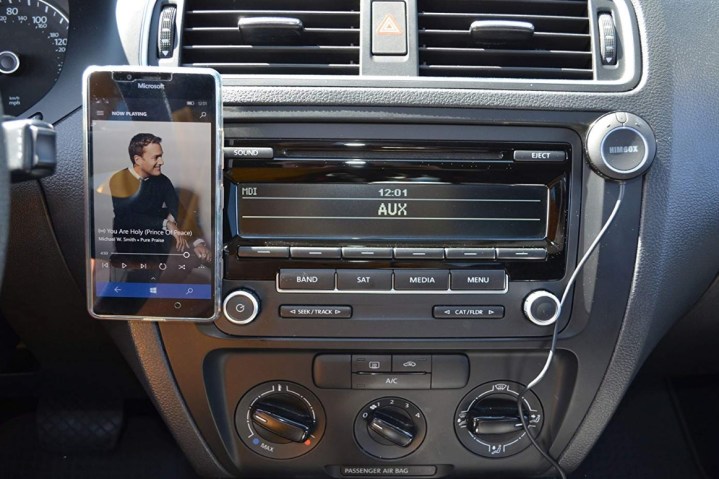
If pulling wires apart just isn’t your cup of tea, the easiest way to add Bluetooth is with a universal kit, such as the iClever Himbox Plus. As the name implies, these standalone units work in just about any car thanks to a built-in speaker and microphone. Many of these systems clip onto your sun visor or can be mounted wherever you’d like with suction cups or tape.
There are pros and cons to these systems. On the plus side, many universal kits can be easily moved from vehicle to vehicle, so you can put Bluetooth in any car you own with just one device. Unfortunately, systems that don’t wire into your factory audio unit won’t be able to integrate with your phone’s music apps. Note that mounting the device with tape could leave a nasty mark on your dashboard.
There are a few universal devices that will wire into your head unit and can add music streaming to the list of functionalities, but that makes the installation process a bit more complicated. These devices usually range in price from $15 to $30.
Aftermarket audio units
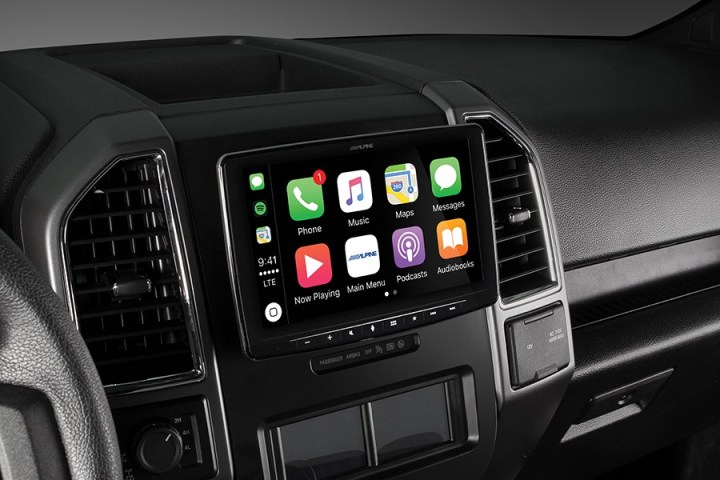
Replacing your vehicle’s head unit is a great option for those who want the greatest range of audio functionality. This process does require some labor, and you’ll need to embrace the aftermarket look of your new system, but most devices come with easy-to-follow instructions. With patience, common tools, and a couple of hours, most people can replace their stereo system. Don’t want the hassle? Many electronics stores offer installation for around $100.
There’s a broad range of replacement stereo systems on the market. Fortunately, even the most affordable units feature Bluetooth integration for hands-free calling. As you work your way up the price ladder, features like Bluetooth music streaming, complete smartphone integration (so you can access your phone’s apps through the car stereo), text messaging (reading your messages out loud so you keep your eyes on the road), and voice commands become available. You can even add units featuring Apple CarPlay or Android Auto.
The sheer number of devices on the market also means you’re likely to find a unit that closely matches your stock setup in color and design. Prices for these devices start as low as $40 and swing up to several hundred dollars for a more feature-rich unit. Top brands such as Pioneer, Alpine, and Kenwood currently offer an array of affordable options.
Vehicle-specific adapters
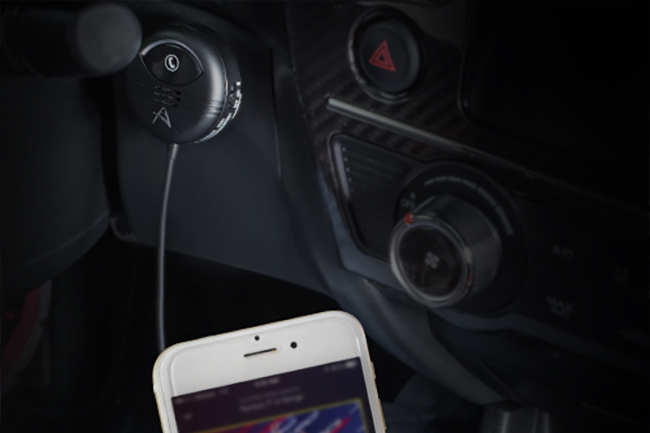
If you love the look of your vehicle’s stock stereo system and don’t mind getting your wires crossed (no pun intended), then a vehicle-specific adapter with Bluetooth functionality may be perfect for you. Crutchfield and other retailers sell a wide array of them.
The best part of a factory adapter is that it has been specifically engineered for your make and model vehicle, so you’ll have the best possible audio quality and vehicle-specific installation instructions. If you just want Bluetooth for hands-free calling and possibly music streaming (some systems are restricted to phone audio), then there’s no need to replace your entire head unit.
Installation time and difficulty will depend on the manufacturer, but most systems require you to remove the factory stereo, wire in the adapter, and route a wired microphone to the back of the head unit. When all is said and done, you’ll be able to make and answer calls via Bluetooth through your factory system. In addition to maintaining the stock aesthetic, these adapters are usually pretty cheap, with the average setup costing less than $100. Luxury automakers generally charge more for their devices, but hey, what else is new?
FM transmitters
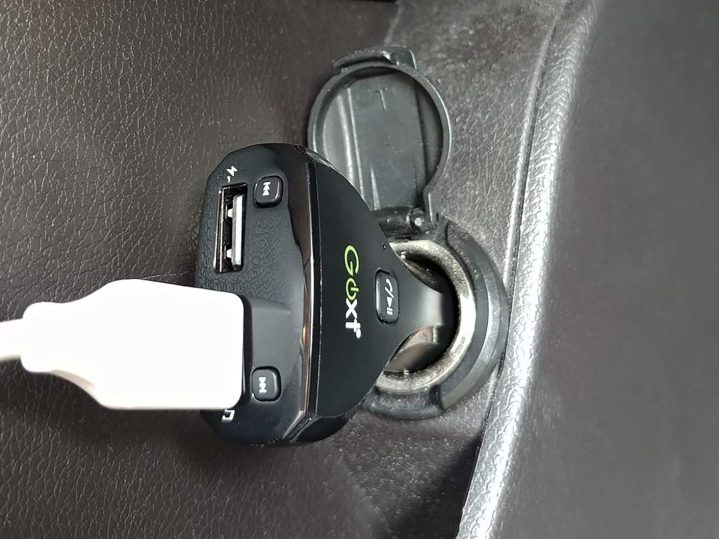
Buying an FM transmitter is one of the cheapest ways to add Bluetooth to your car, especially if you drive an older model that lacks an auxiliary input. It’s a phone-shaped device that plugs into your car’s cigarette lighter and broadcasts a signal over a clear FM frequency. Set the transmitter to 106.3, for example, tune your radio to that frequency, and you’ll hear the music streaming from your phone or your MP3 player. Most FM transmitters let you make hands-free calls, too.
You can get a decent FM transmitter like this
for about $15. We like this solution because it’s affordable, for one. There is no installation required, either. You simply turn the unit on and set it to your desired frequency. Since FM frequencies vary from region to region, this will take some tweaking if you typically drive long distances. A station that’s clear in, say, Reno, could broadcast ’90s hits in Salt Lake City. You’ll often find yourself resetting the station during your travels. Another potential challenge is finding an open frequency. In a major city like San Francisco, it is often easier said than done. In remote areas, static can wreak havoc on your audio experience, too.
Bluetooth receivers
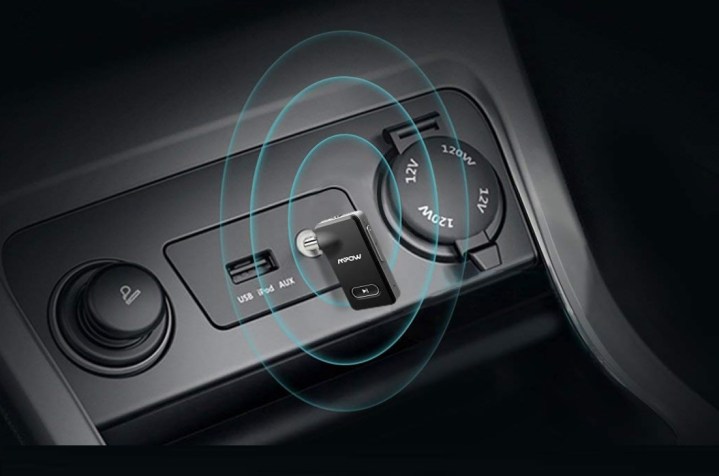
When you install a Bluetooth receiver in your car, you can quickly pair a Bluetooth-ready device to it. The options are limitless. Once you’ve made the connection, you can do a variety of things, such as play music through your car’s sound system, make or take hands-free phone calls, and much more.
Bluetooth resembles an FM transmitter and works in similar ways. Neither of them requires radio waves in order to connect to other devices. Bluetooth gives you a clear, crisp, static-free sound, which always beats a shakey FM frequency. Keep in mind that your car still does need an auxiliary input to use Bluetooth. Most modern car models have these already built-in, but many older models do not. If older car owners want to take advantage of all Bluetooth offers, they must purchase and install a new stereo system with Bluetooth capabilities.
Thankfully, in today’s world, you can select from a wide range of Bluetooth receivers. You can expect to pay around $20. As always, the more advanced the technology, the higher the price. One of our favorite receivers is the Mpow. You’ll quickly notice its sleek and attractive design, which aids its aesthetic appeal. But what makes it stand out is its list of unique features. The Mpow offers a downloadable mobile app that helps you locate your parked car in a parking lot or crowded place. This receiver can also successfully connect to two different devices at the same time. Using this feature, you can stream music on your iPod while still making a call on your iPhone.
Editors’ Recommendations

